-
EXECUTIVE SUMMARY
-
SCOPE OF THE REPORT
-
MARKET DEFINITION
-
SCOPE OF THE STUDY
- DEFINITION
- ASSUMPTIONS
- LIMITATIONS
-
2.2.2
-
RESEARCH OBJECTIVE
-
RESEARCH
- PRIMARY RESEARCH
- SECONDARY RESEARCH
-
PROCESS
-
MARKET
-
SIZE ESTIMATION
-
FORECAST MODEL
-
MARKET LANDSCAPE
-
PORTER’S
-
FIVE FORCES ANALYSIS
-
OF BUYERS
-
4
-
THREAT OF NEW ENTRANTS
-
BARGAINING POWER
-
BARGAINING POWER OF SUPPLIERS
-
THREAT OF SUBSTITUTES
-
SEGMENT RIVALRY
-
VALUE CHAIN/SUPPLY CHAIN ANALYSIS
-
MARKET DYNAMICS
-
INTRODUCTION
-
MARKET DRIVERS
-
MARKET RESTRAINTS
-
MARKET OPPORTUNITIES
-
MARKET TRENDS
-
GLOBAL AUTOMOTIVE
-
CONTROL PANEL MARKET , BY COMPONENT
-
INTRODUCTION
-
ROTARY SWITCH
- MARKET ESTIMATES & FORECAST, 2024-2032
- MARKET ESTIMATES &
-
FORECAST BY REGION, 2024-2032
-
ROOF LIGHT
- MARKET ESTIMATES &
- MARKET ESTIMATES & FORECAST BY REGION, 2024-2032
-
FORECAST, 2024-2032
-
TOUCH PAD
- MARKET ESTIMATES & FORECAST, 2024-2032
-
5.4.2
-
MARKET ESTIMATES & FORECAST BY REGION, 2024-2032
-
SMART ROOF
- MARKET ESTIMATES & FORECAST
-
5.5.1
-
MARKET ESTIMATES & FORECAST, 2024-2032
-
BY REGION, 2024-2032
-
LOCKING FUNCTION
- MARKET ESTIMATES &
- MARKET ESTIMATES & FORECAST BY REGION, 2024-2032
-
FORECAST, 2024-2032
-
SIDE MIRROR
- MARKET ESTIMATES & FORECAST, 2024-2032
-
5.7.2
-
MARKET ESTIMATES & FORECAST BY REGION, 2024-2032
-
DOOR PANEL LIGHT
- MARKET ESTIMATES & FORECAST, 2024-2032
- MARKET ESTIMATES &
-
FORECAST BY REGION, 2024-2032
-
DRIVER MONITORING CAMERA
- MARKET
- MARKET ESTIMATES & FORECAST BY
-
ESTIMATES & FORECAST, 2024-2032
-
REGION, 2024-2032
-
ELECTRIC WINDOW
- MARKET ESTIMATES & FORECAST,
- MARKET ESTIMATES & FORECAST BY REGION, 2024-2032
- MARKET ESTIMATES & FORECAST, 2024-2032
- MARKET
-
5.11
-
OTHERS
-
ESTIMATES & FORECAST BY REGION, 2024-2032
-
GLOBAL AUTOMOTIVE
-
CONTROL PANEL MARKET , BY CONTROL PANEL TYPE
-
INTRODUCTION
-
MANUAL
- MARKET ESTIMATES & FORECAST, 2024-2032
- MARKET ESTIMATES &
-
FORECAST BY REGION, 2024-2032
-
PUSH BUTTON
- MARKET ESTIMATES &
- MARKET ESTIMATES & FORECAST BY REGION, 2024-2032
-
FORECAST, 2024-2032
-
TOUCH SCREEN
- MARKET ESTIMATES & FORECAST, 2024-2032
-
6.4.2
-
MARKET ESTIMATES & FORECAST BY REGION, 2024-2032
-
GLOBAL AUTOMOTIVE
-
CONTROL PANEL MARKET , BY VEHICLE TYPE
-
INTRODUCTION
-
PASSENGER
- MARKET ESTIMATES & FORECAST, 2024-2032
- MARKET ESTIMATES
-
CAR
-
& FORECAST BY REGION, 2024-2032
-
COMMERCIAL VEHICLES
- MARKET
- MARKET ESTIMATES & FORECAST BY
-
ESTIMATES & FORECAST, 2024-2032
-
REGION, 2024-2032
-
GLOBAL AUTOMOTIVE CONTROL PANEL MARKET , BY REGION
-
INTRODUCTION
-
NORTH AMERICA
- MARKET ESTIMATES & FORECAST,
- MARKET ESTIMATES & FORECAST BY COMPONENT, 2024-2032
- MARKET ESTIMATES & FORECAST BY CONTROL PANEL TYPE, 2024-2032
- THE U.S
- CANADA
-
8.2.4
-
MARKET ESTIMATES & FORECAST BY VEHICLE TYPE, 2024-2032
-
& FORECAST BY COMPONENT, 2024-2032
-
BY CONTROL PANEL TYPE, 2024-2032
-
VEHICLE TYPE, 2024-2032
-
8.2.6.4
-
MARKET ESTIMATES & FORECAST BY VEHICLE TYPE, 2024-2032
-
EUROPE
- MARKET ESTIMATES & FORECAST
- MARKET ESTIMATES & FORECAST BY CONTROL PANEL
- MARKET ESTIMATES & FORECAST BY VEHICLE TYPE, 2024-2032
- U.K
- GERMANY
- ITALY
- REST OF EUROPE
-
8.3.1
-
MARKET ESTIMATES & FORECAST, 2024-2032
-
BY COMPONENT, 2024-2032
-
TYPE, 2024-2032
-
8.3.5.2
-
MARKET ESTIMATES & FORECAST BY COMPONENT, 2024-2032
-
& FORECAST BY CONTROL PANEL TYPE, 2024-2032
-
FORECAST BY VEHICLE TYPE, 2024-2032
-
& FORECAST, 2024-2032
-
8.3.7
-
FRANCE
-
ESTIMATES & FORECAST BY COMPONENT, 2024-2032
-
FORECAST BY CONTROL PANEL TYPE, 2024-2032
-
BY VEHICLE TYPE, 2024-2032
-
FORECAST, 2024-2032
-
8.3.8.4
-
MARKET ESTIMATES & FORECAST BY VEHICLE TYPE, 2024-2032
-
& FORECAST BY COMPONENT, 2024-2032
-
BY CONTROL PANEL TYPE, 2024-2032
-
VEHICLE TYPE, 2024-2032
-
ASIA PACIFIC
- MARKET ESTIMATES &
- MARKET ESTIMATES & FORECAST BY COMPONENT, 2024-2032
- MARKET ESTIMATES & FORECAST BY CONTROL PANEL TYPE, 2024-2032
- CHINA
- JAPAN
- INDIA
-
FORECAST, 2024-2032
-
8.4.4
-
MARKET ESTIMATES & FORECAST BY VEHICLE TYPE, 2024-2032
-
8.4.5.1
-
MARKET ESTIMATES & FORECAST, 2024-2032
-
BY COMPONENT, 2024-2032
-
PANEL TYPE, 2024-2032
-
ESTIMATES & FORECAST BY CONTROL PANEL TYPE, 2024-2032
-
& FORECAST BY VEHICLE TYPE, 2024-2032
-
& FORECAST, 2024-2032
-
8.4.8
-
REST OF ASIA PACIFIC
-
ESTIMATES & FORECAST BY CONTROL PANEL TYPE, 2024-2032
-
& FORECAST BY VEHICLE TYPE, 2024-2032
-
REST OF THE WORLD
- MARKET ESTIMATES & FORECAST
- MARKET ESTIMATES & FORECAST BY CONTROL PANEL
- MARKET ESTIMATES & FORECAST BY VEHICLE TYPE, 2024-2032
-
8.5.1
-
MARKET ESTIMATES & FORECAST, 2024-2032
-
BY COMPONENT, 2024-2032
-
TYPE, 2024-2032
-
COMPETITIVE LANDSCAPE
-
COMPANY PROFILE
-
CONTINENTAL
- COMPANY OVERVIEW
- CONTROL PANEL TYPES/SERVICES
- FINANCIAL OVERVIEW
- KEY DEVELOPMENTS
- SWOT ANALYSIS
-
AG (GERMANY)
-
OFFERING
-
10.1.5
-
STRATEGY
-
JOHNSON CONTROLS, INC. (U.S)
- CONTROL PANEL TYPES/SERVICES OFFERING
- FINANCIAL
- KEY DEVELOPMENTS
- STRATEGY
- SWOT ANALYSIS
-
10.2.1
-
COMPANY OVERVIEW
-
OVERVIEW
-
MAGNA INTERNATIONAL INC. (CANADA)
- COMPANY OVERVIEW
- FINANCIAL OVERVIEW
- STRATEGY
- SWOT ANALYSIS
-
10.3.2
-
CONTROL PANEL TYPES/SERVICES OFFERING
-
10.3.4
-
KEY DEVELOPMENTS
-
HYUNDAI
- COMPANY OVERVIEW
- CONTROL PANEL
- FINANCIAL OVERVIEW
- KEY DEVELOPMENTS
- STRATEGY
- SWOT ANALYSIS
-
MOBIS CO. LTD. (SOUTH KOREA)
-
TYPES/SERVICES OFFERING
-
FAURECIA S.A. (FRANCE)
- COMPANY OVERVIEW
- CONTROL PANEL TYPES/SERVICES OFFERING
- KEY DEVELOPMENTS
- STRATEGY
-
10.5.3
-
FINANCIAL OVERVIEW
-
10.5.6
-
SWOT ANALYSIS
-
LEAR CORPORATION (U.S)
- COMPANY OVERVIEW
- FINANCIAL OVERVIEW
- STRATEGY
- SWOT ANALYSIS
-
10.6.2
-
CONTROL PANEL TYPES/SERVICES OFFERING
-
10.6.4
-
KEY DEVELOPMENTS
-
VALEO
- COMPANY OVERVIEW
- CONTROL PANEL TYPES/SERVICES
- FINANCIAL OVERVIEW
- KEY DEVELOPMENTS
- SWOT ANALYSIS
-
SA (FRANCE)
-
OFFERING
-
10.7.5
-
STRATEGY
-
DELPHI AUTOMOTIVE PLC. (U.K)
- CONTROL PANEL TYPES/SERVICES OFFERING
- FINANCIAL
- KEY DEVELOPMENTS
- STRATEGY
- SWOT ANALYSIS
-
10.8.1
-
COMPANY OVERVIEW
-
OVERVIEW
-
TOYOTA BOSHOKU CORPORATION (JAPAN)
- COMPANY OVERVIEW
- FINANCIAL OVERVIEW
- STRATEGY
- SWOT ANALYSIS
-
10.9.2
-
CONTROL PANEL TYPES/SERVICES OFFERING
-
10.9.4
-
KEY DEVELOPMENTS
-
CALSONIC
- COMPANY OVERVIEW
- CONTROL PANEL
- FINANCIAL OVERVIEW
- KEY DEVELOPMENTS
- STRATEGY
- SWOT ANALYSIS
-
KANSEI CORPORATION (JAPAN)
-
TYPES/SERVICES OFFERING
-
-
LIST OF TABLES
-
GLOBAL AUTOMOTIVE CONTROL PANEL MARKET: BY REGION, 2024-2032
-
NORTH AMERICA AUTOMOTIVE CONTROL PANEL MARKET: BY COUNTRY, 2024-2032
-
EUROPE AUTOMOTIVE CONTROL PANEL MARKET: BY COUNTRY, 2024-2032
-
ASIA-PACIFIC AUTOMOTIVE CONTROL PANEL MARKET: BY COUNTRY, 2024-2032
-
ROW AUTOMOTIVE CONTROL PANEL MARKET: BY COUNTRY, 2024-2032
-
TABLE
-
GLOBAL AUTOMOTIVE CONTROL PANEL MARKET, BY COMPONENT, BY REGIONS, 2024-2032
-
NORTH AMERICA AUTOMOTIVE CONTROL PANEL MARKET, BY COMPONENT, BY COUNTRY,
-
EUROPE AUTOMOTIVE CONTROL PANEL MARKET, BY RESIN TYPE, BY
-
COUNTRY, 2024-2032
-
ASIA-PACIFIC AUTOMOTIVE CONTROL PANEL MARKET BY
-
COMPONENT, BY COUNTRY, 2024-2032
-
ROW AUTOMOTIVE CONTROL PANEL MARKET
-
BY COMPONENT, BY COUNTRY, 2024-2032
-
GLOBAL AUTOMOTIVE POWERTRAIN
-
SYSTEM BY CONTROL PANEL TYPE MARKET: BY REGIONS, 2024-2032
-
NORTH
-
AMERICA AUTOMOTIVE CONTROL PANEL MARKET BY CONTROL PANEL TYPE: BY COUNTRY, 2024-2032
-
EUROPE AUTOMOTIVE CONTROL PANEL MARKET BY CONTROL PANEL TYPE: BY
-
COUNTRY, 2024-2032
-
ASIA PACIFIC AUTOMOTIVE CONTROL PANEL MARKET BY
-
CONTROL PANEL TYPE: BY COUNTRY, 2024-2032
-
ROW AUTOMOTIVE CONTROL
-
PANEL MARKET BY CONTROL PANEL TYPE: BY COUNTRY, 2024-2032
-
GLOBAL
-
AUTOMOTIVE CONTROL PANEL MARKET, BY VEHICLE TYPE, BY REGIONS, 2024-2032
-
TABLE
-
NORTH AMERICA AUTOMOTIVE CONTROL PANEL MARKET, BY VEHICLE TYPE, BY COUNTRY, 2024-2032
-
EUROPE AUTOMOTIVE CONTROL PANEL MARKET, BY VEHICLE TYPE, BY COUNTRY,
-
ASIA PACIFIC AUTOMOTIVE CONTROL PANEL MARKET, BY VEHICLE
-
TYPE, BY COUNTRY, 2024-2032
-
ROW AUTOMOTIVE CONTROL PANEL MARKET,
-
BY VEHICLE TYPE, BY COUNTRY, 2024-2032
-
GLOBAL CONTROL PANEL TYPE
-
TYPE MARKET: BY REGION, 2024-2032
-
GLOBAL CONTROL PANEL TYPE MARKET:
-
BY REGION, 2024-2032
-
GLOBAL VEHICLE TYPE MARKET: BY REGION, 2024-2032
-
NORTH AMERICA AUTOMOTIVE CONTROL PANEL MARKET, BY COUNTRY
-
TABLE
-
NORTH AMERICA AUTOMOTIVE CONTROL PANEL MARKET, BY COMPONENT
-
NORTH
-
AMERICA AUTOMOTIVE CONTROL PANEL MARKET, BY CONTROL PANEL TYPE
-
NORTH
-
AMERICA AUTOMOTIVE CONTROL PANEL MARKET, BY VEHICLE TYPE
-
EUROPE: AUTOMOTIVE
-
CONTROL PANEL MARKET, BY COUNTRY
-
EUROPE: AUTOMOTIVE CONTROL PANEL
-
MARKET, BY COMPONENT
-
EUROPE: AUTOMOTIVE CONTROL PANEL MARKET, BY CONTROL
-
PANEL TYPE
-
EUROPE: AUTOMOTIVE CONTROL PANEL MARKET, BY VEHICLE TYPE
-
ASIA-PACIFIC: AUTOMOTIVE CONTROL PANEL MARKET, BY COUNTRY
-
TABLE
-
ASIA-PACIFIC: AUTOMOTIVE CONTROL PANEL MARKET, BY COMPONENT
-
ASIA-PACIFIC:
-
AUTOMOTIVE CONTROL PANEL MARKET, BY CONTROL PANEL TYPE
-
ASIA-PACIFIC:
-
AUTOMOTIVE CONTROL PANEL MARKET, BY VEHICLE TYPE
-
ROW: AUTOMOTIVE CONTROL
-
PANEL MARKET, BY REGION
-
ROW AUTOMOTIVE CONTROL PANEL MARKET, BY COMPONENT
-
ROW AUTOMOTIVE CONTROL PANEL MARKET, BY CONTROL PANEL TYPE
-
TABLE
-
ROW AUTOMOTIVE CONTROL PANEL MARKET, BY VEHICLE TYPE
-
LIST OF
-
FIGURES
-
RESEARCH PROCESS OF MRFR
-
TOP DOWN
-
& BOTTOM UP APPROACH
-
MARKET DYNAMICS
-
IMPACT ANALYSIS:
-
MARKET DRIVERS
-
IMPACT ANALYSIS: MARKET RESTRAINTS
-
PORTER’S
-
FIVE FORCES ANALYSIS
-
VALUE CHAIN ANALYSIS
-
GLOBAL AUTOMOTIVE
-
CONTROL PANEL MARKET SHARE, BY COMPONENT, 2024 (%)
-
GLOBAL AUTOMOTIVE
-
CONTROL PANEL MARKET, BY COMPONENT, 2024-2032 (USD MILLION)
-
GLOBAL
-
AUTOMOTIVE CONTROL PANEL MARKET SHARE, BY VEHICLE TYPE, 2024 (%)
-
FIGURE 11
-
GLOBAL AUTOMOTIVE CONTROL PANEL MARKET, BY VEHICLE TYPE, 2024-2032 (USD MILLION)
-
GLOBAL AUTOMOTIVE CONTROL PANEL MARKET SHARE (%), BY REGION, 2024
-
GLOBAL AUTOMOTIVE CONTROL PANEL MARKET, BY REGION, 2024-2032 (USD MILLION)
-
NORTH AMERICA AUTOMOTIVE CONTROL PANEL MARKET SHARE (%), 2024
-
FIGURE
-
NORTH AMERICA AUTOMOTIVE CONTROL PANEL MARKET BY COUNTRY, 2024-2032 (USD MILLION)
-
EUROPE AUTOMOTIVE CONTROL PANEL MARKET SHARE (%), 2024
-
FIGURE 17
-
EUROPE AUTOMOTIVE CONTROL PANEL MARKET BY COUNTRY, 2024-2032 (USD MILLION)
-
FIGURE
-
ASIA-PACIFIC AUTOMOTIVE CONTROL PANEL MARKET SHARE (%), 2024
-
ASIA-PACIFIC
-
AUTOMOTIVE CONTROL PANEL MARKET BY COUNTRY, 2024-2032 (USD MILLION)
-
FIGURE
-
REST OF THE WORLD AUTOMOTIVE CONTROL PANEL MARKET SHARE (%), 2024
-
FIGURE
-
REST OF THE WORLD AUTOMOTIVE CONTROL PANEL MARKET BY COUNTRY, 2024-2032 (USD
-
MILLION)

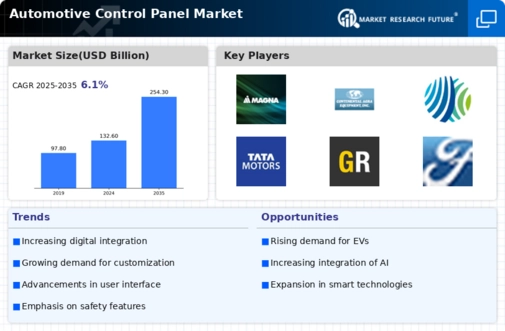

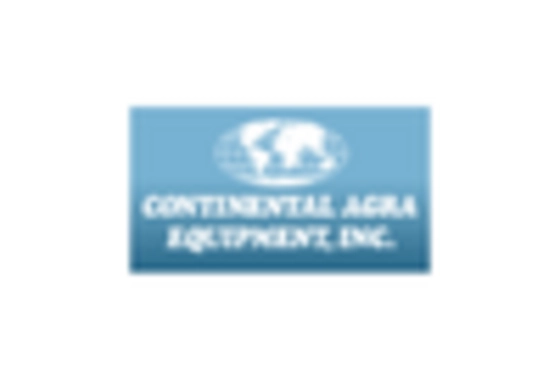
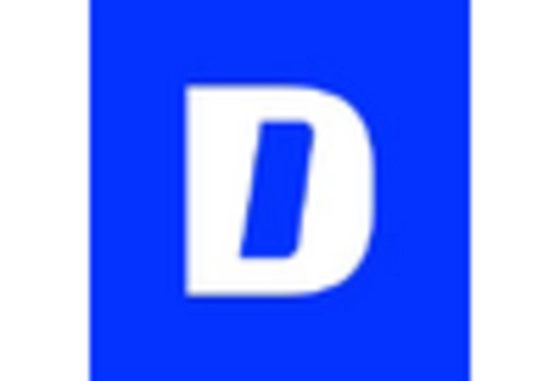
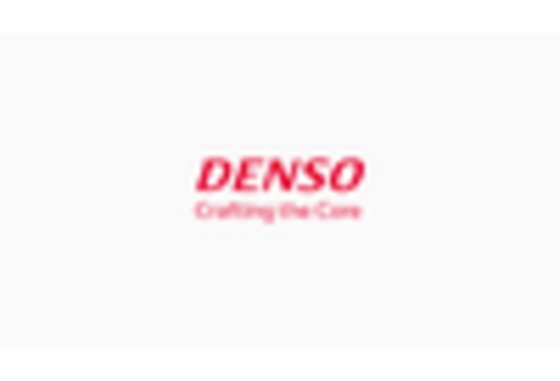
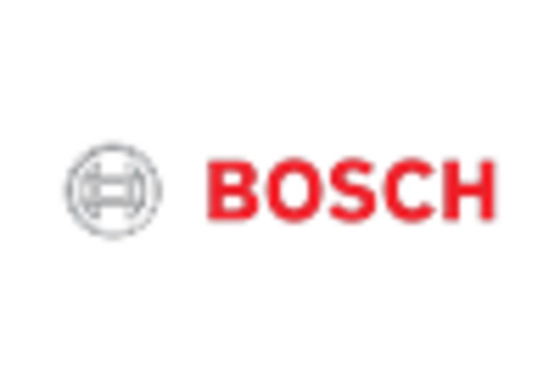
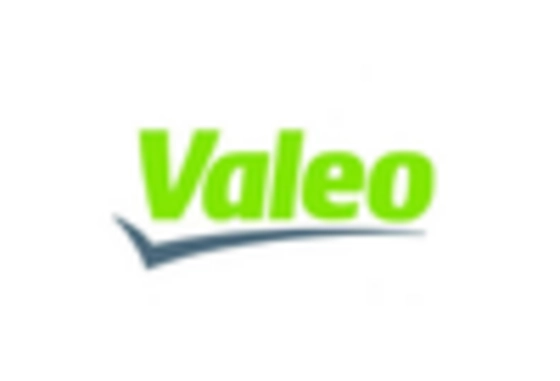

Leave a Comment